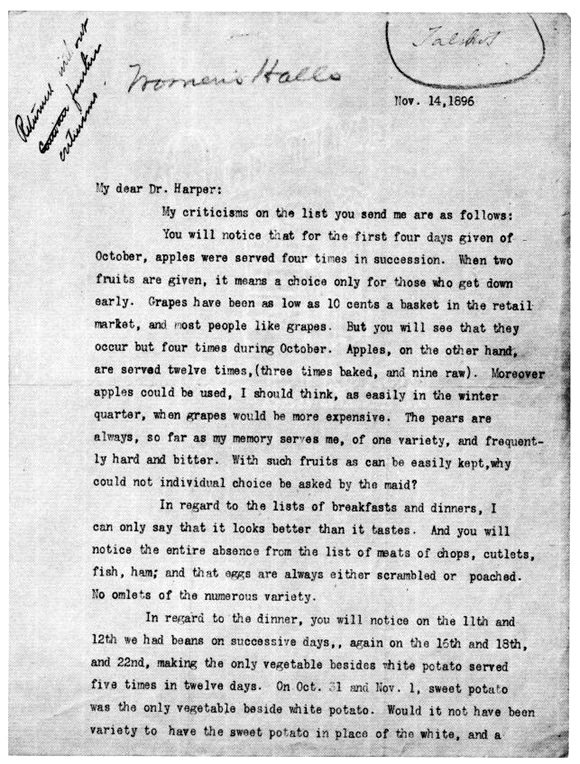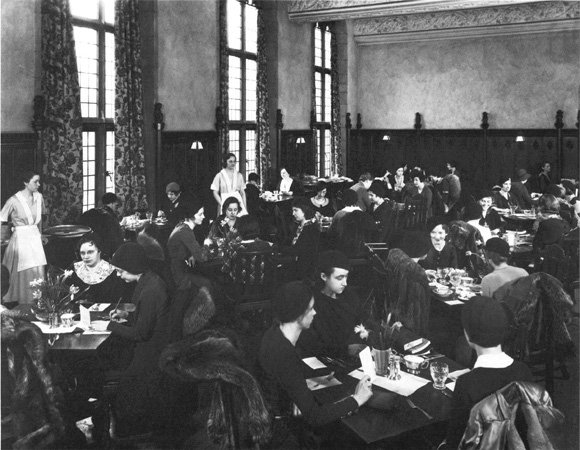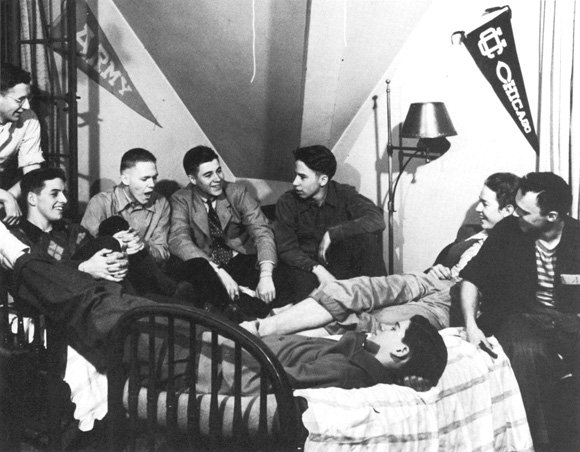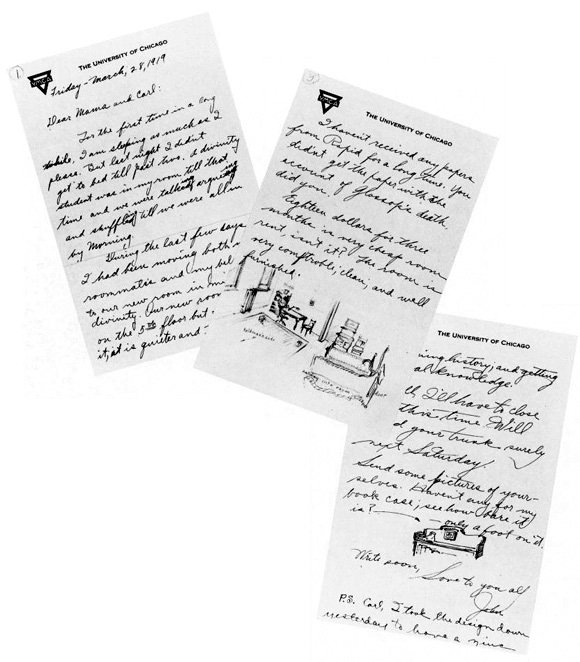A Home Away from Home
Indeed the residence halls became known for their intimate and sometimes spirited environment. "Snellites" were especially conspicuous. In addition to sponsoring quarterly dances and regular socials, the male residents of Snell Hall reveled in their reputation for boisterous conviviality and crude practical jokes. Meanwhile the more reserved graduate students of Gates Hall were teased for using their residence for, of all things, sleep and study.
Harper had hoped that the University could provide accommodations for all students, except for those who preferred to live at home. In the years after Hitchcock Hall was built in 1903, however, a majority of the University's capital expenditures were applied to the construction of academic facilities and laboratories. By 1923 only 13.5 percent of all students and an even smaller percentage of undergraduates lived in the residence halls, while the majority of the women students chose to live at home. Although students found adequate living arrangements, they were not always as closely integrated with the campus environment as Harper had hoped. By the mid-1920s, President Ernest D. Burton, Dean of the Colleges Ernest H. Wilkins, and Vice-President Frederic Woodward launched an ambitious program to improve facilities for undergraduate education, including plans for major additions to the residence hall system. Burton's death in 1925 and the onset of the Depression prevented full realization of these plans, but substantial improvements in the housing system were achieved. The Burton-Judson residence hall was built in 1931, and International House was added in 1932. In the 1950s, as the Hyde Park area was undergoing urban renewal,the University began to purchase apartment buildings in the neighborhood for married and graduate students. Two new residence halls were also constructed: Woodward Court in 1958 and Pierce Hall in 1960.
Today there are thirty-nine houses in twelve residence halls (all co-ed) for which seven senior faculty or administrators serve as resident masters. Over two-thirds of the undergraduates live in the residence hall system. The co-ed environment, which the University began to offer in 1970, would have surprised Harper, but he would be pleased that the University has continued to provide students with a common social experience.




